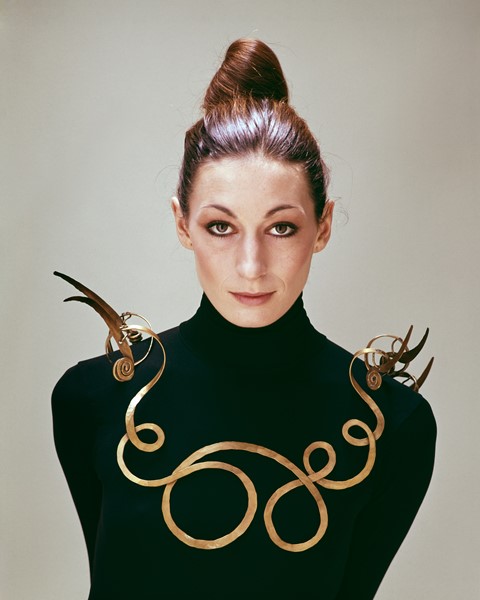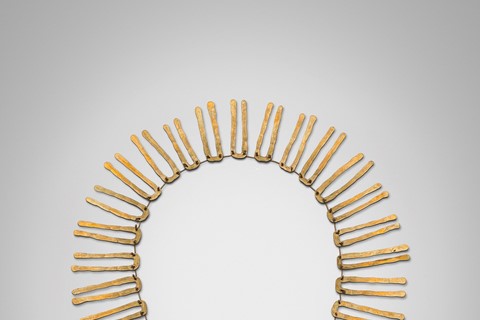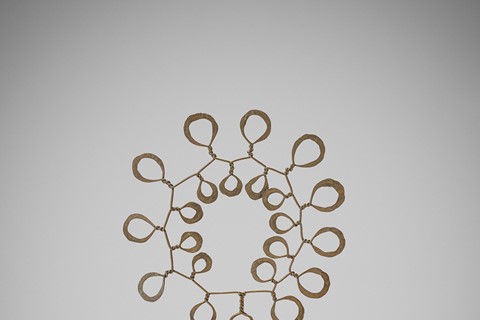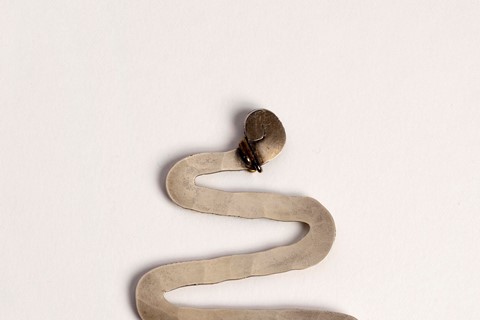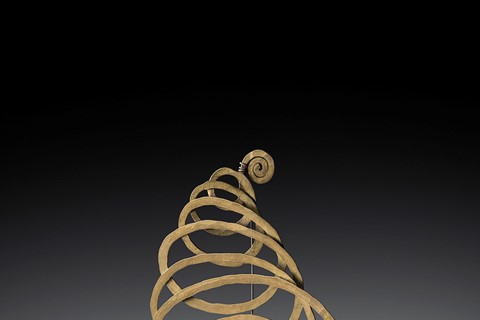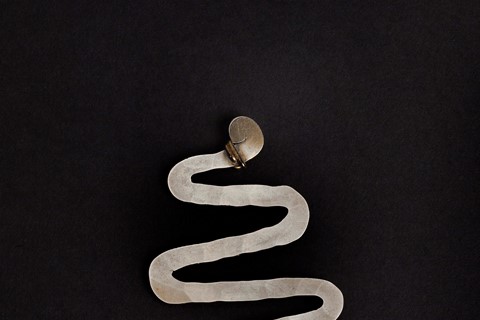The artist's uncharted passion for crafting jewellery comes to light in a dynamic new London exhibition, writes Laura Jordan
As the pioneer of kinetic art, chances are when you think of Alexander Calder’s work his balletic mobiles or monumental sculptures come to mind. While these feats of engineering are today a near obligatory inclusion in the world’s biggest galleries (witness last year’s blockbuster Tate Modern retrospective), and those huge installations reinvigorate generic public spaces with their hulking, otherworldly presence, Calder also worked on a much smaller scale. Lesser known, though no less impressive, is the American artist’s jewellery, which he produced throughout his career. Now London’s Louisa Guinness Gallery – which specialises in artist-made jewellery – is giving Calder’s necklaces, brooches, earrings and headpieces their first solo show in the UK, The Boldness of Calder.
Calder’s jewellery packs the same powerful punch as his large-scale sculptures. “He made them with his own hands, and was never really without wire and a pair of pliers in his pocket, [which] he would take out and start playing with,” says Guinness. “So that’s why I think you can see his ‘hand’ in them”. Those unmistakable Calderian hallmarks are there; the spiral for instance, a recurring motif in his oeuvre – from the gouaches to the mobiles – finds life as swirling necklaces and coiled brooches.
Guinness is keen to point out that the value of Calder’s jewellery lies in its design rather than its carat count, as the artist eschewed precious metals, preferring to work with silver and brass. “He wasn’t interested in the material value of them at all, he was interested in the aesthetics,” she explains, adding that’s why he’s so pivotal in the world of artist jewellery which treasures design over diamonds. “I don’t want to ever compete head-on with a jeweller who’s making things out of precious materials because it’s a very different thing. They are doing that to enhance the beauty of the wearer to make the stone look fabulous; this is about a statement, they’re really little sculptures…[that] make people think about jewellery in a different way”.
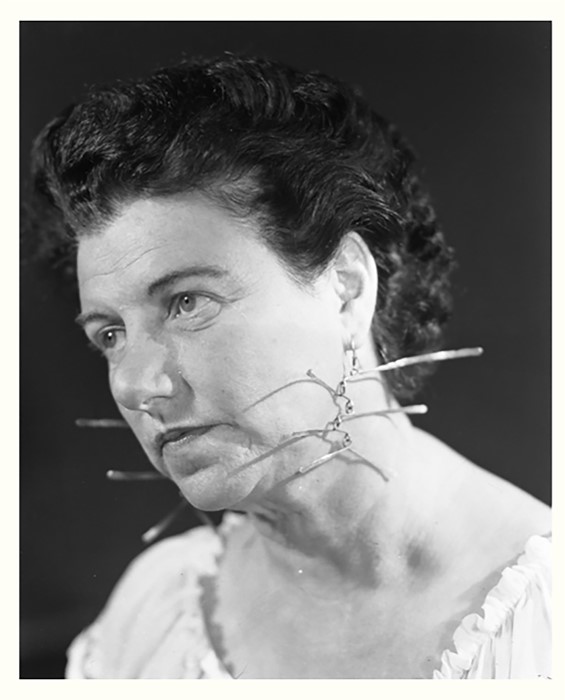
There’s an intimacy to Calder’s jewellery that can’t be missed; crafted by hand on a piece-to-piece basis, he resolutely shunned requests to produce editions for behemoth jewellery houses. Unsurprisingly these sculptural, gutsy pieces – the antithesis of dainty studs or a polite string of pearls – appealed to a similarly forward-thinking clientele. “You had to be pretty brave to wear his jewellery because it was quite a strong statement,” says Guinness. “That’s why we called the exhibition The Boldness of Calder”. Many of the designs were made for friends such as Peggy Guggenheim and Georgia O’Keeffe – photographs of whom accompany the exhibition, alongside shots of Angelica Huston and Brooke Shields also wearing enormous Calder designs.
It’s hard to believe the majority of pieces featured in the exhibition date back to the 1940s. The often-extravagant scale is tempered by the lack of adornment that feels thoroughly modern; that artistry matched by an economy of refusal means many of the pieces wouldn’t look out of place in, say, a Céline collection. This contemporary feel is something Guinness wanted to emphasise, so she commissioned a series of photographs by Alexander English to run in the exhibition. “We wanted to revisit those iconic images and create some new things,” says Guinness, adding jokingly that Calder jewellery shouldn’t just be for wealthy art collectors in Issey Miyake. “Even you cool, groovy people can wear these.”
Guinness has an innate understanding of the appeal of Calder’s jewellery. Although the enormous pieces might look intimidating, she says, “It feels free… You don’t feel like you’re in a box when you’re wearing it," before concluding, “Although they’re very valuable, nobody else knows that, [but] if you know Calder you can immediately identify someone else who’s wearing it. Like a little secret club”.

The Boldness of Calder runs until November 5, 2016 at the Louisa Guinness Gallery, London
